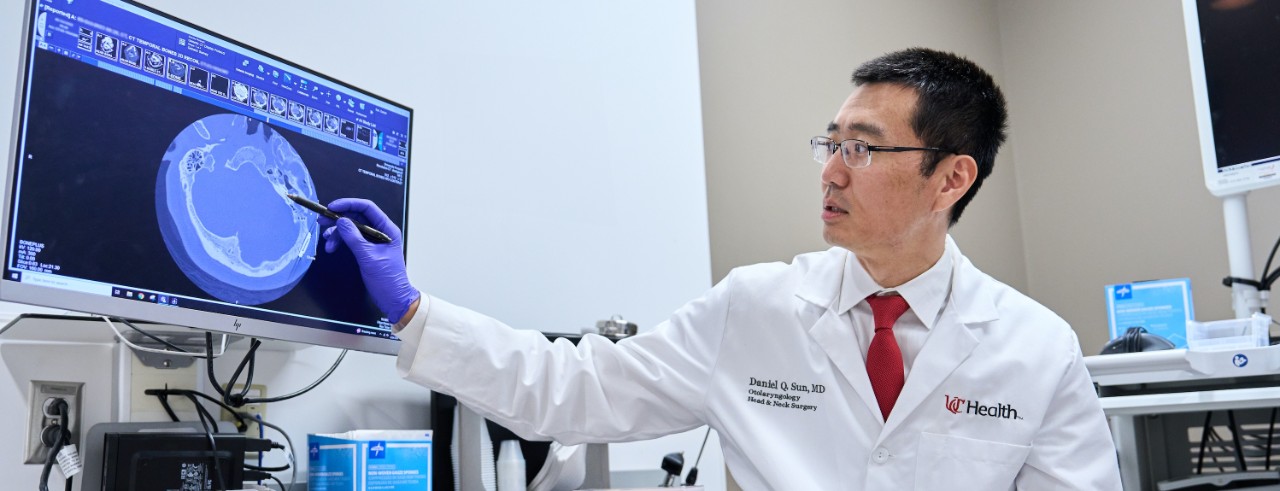
How technology is changing approaches to treat hearing loss
UC expert part of WVXU's Cincinnati Edition panel discussion
According to data from the CDC, more Americans are developing hearing problems earlier in life, yet current devices and treatments can be costly, making them less accessible.
The University of Cincinnati's Daniel Sun, MD, told WVXU's Cincinnati Edition that hearing loss can be thought of like a piano, with different interventions needed based on different situations.
"Hearing loss starts on the right side and slowly works itself toward the left side, toward the bass sounds," said Sun, the Myles L. Pensak, MD, Endowed Professor in Neurotology and Skull Base Surgery, director of the Division of Neurotology, neurotology fellowship program director and associate professor of otolaryngology in the University of Cincinnati College of Medicine, and a UC Health physician. "So the very first things that can be detected...are the very, very right hand side keys of the piano. And then eventually it works itself more and more towards the middle and the left, and that’s when it becomes more noticeable to everyday folks."
The FDA recently authorized new software that can transform Apple’s AirPods Pro 2 into inexpensive hearing aids. Sun said it's a great public health effort to provide hearing aids to more people that need them, but it is not a one-size-fits-all remedy.
"Over the counter hearing aids are only approved for individuals with mild to moderate hearing loss of a specific type, so it’s still important to keep in mind to check with an audiologist or a physician if the hearing loss is more severe," he said. "[If this is] happening at a younger age, get an actual hearing test to determine what may actually be going on."
Over the counter hearing aids, or those built in to AirPods and other headphones, can be thought of like reader glasses you can buy at the drug store without a prescription, but having different hearing between two ears may be a sign you need a formal hearing test from an expert.
Listen to the Cincinnati Edition segment.
Featured photo at top of Sun pointing to a scan on a monitor. Photo/UC Health.
Related Stories
WVXU: UC study tests tongue exercises to improve swallowing function after stroke
January 11, 2024
WVXU highlighted a new trial at the University of Cincinnati that will test an at-home tongue endurance exercise to improve patients’ swallowing function after a stroke.
This UC professor's nanoparticle research could help treat hearing loss better
August 20, 2024
WVXU highlighted the University of Cincinnati's Daniel Sun, who is studying the potential of using magnetic nanoparticles as a delivery system for drugs to reach the inner ear to treat hearing loss.
How technology is changing approaches to treat hearing loss
November 1, 2024
The University of Cincinnati's Daniel Sun joined WVXU's Cincinnati Edition to discuss how new technology like Apple AirPods' new hearing aid feature are affecting hearing loss treatments.
